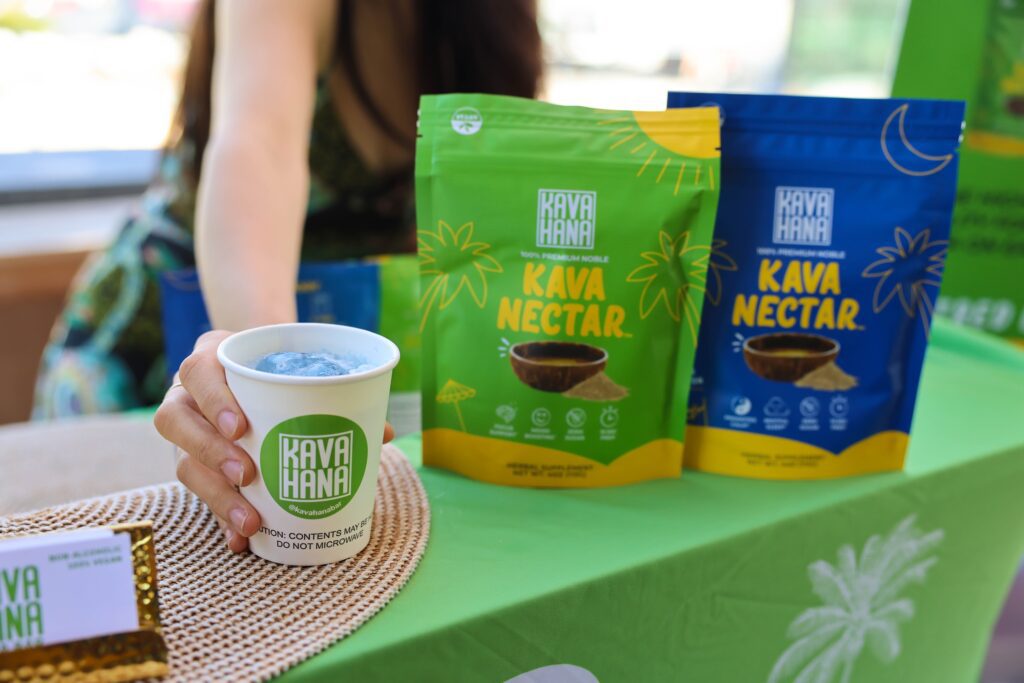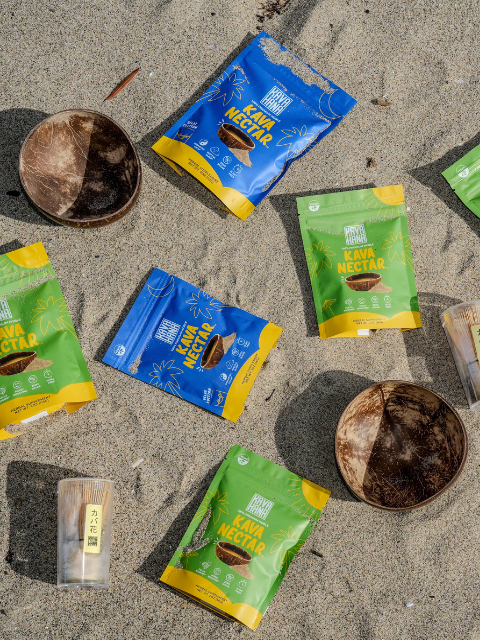While all kava comes from the same plant, where the plant is actually grown plays a large part in its effects. These are known as kava cultivars, sometimes also called cultivars. Each strain affects the body and mind differently. Some give you a lighter, clear, euphoric feeling, while others have a heavier, sedating effect.
Kava is unlike many plants when it comes to reproducing, as it doesn’t produce flowers or seeds. You can only propagate or grow other kava plants from its roots. To be sure the effects are what the grower wants, they will harvest the root and drink it fresh. If they are happy with the effects, they’ll replant that plant’s root. If not, they’ll throw it away. This process allows kava farmers to highlight specific growth patterns to get the right kavalactones, the active ingredient in kava, to get the right effects.
How are kava cultivars organized?
Kava cultivars are best organized by their region. Being an area of islands, the South Pacific is a unique place to grow plants as each country has a different soil content and landscape. This is one of the aspects of kava’s unique effects and flavors.
Kava cultivars can be categorized into heady, heavy, and balanced. Heady kavas give you the calm, clear, and euphoric feeling you have in your mind. Heavy kavas give you a feeling of sedation, weighted limbs, and relaxed muscles in your body. Balanced kavas are right in the middle; they have both heady and heavy effects.
Kava cultivars by country
Here is a rundown of the most common countries that produce kava and the qualities their kava is known for.
Fijian Kava cultivars
This kava strain is known for its heady effects and smooth, less bitter taste. Plants grown here are generally higher in methysticin, which could make it toxic. It is probably the most common type of kava on the market. It is unique in that it usually offers three varieties based on the part of the root that is being used: Waka, Lawena, and Kasa.
Waka comes from the lateral roots, which are stronger and have more kavalactones. Lawena comes from the basal part of the root and stem (the part of the root closest to the stem). This part has a milder flavor and milder effect. Kasa is the cheapest and roughest part of the kava plant as it comes from the stem. It’s not a desirable part of the plant as it has a very bitter taste and weak effects. Usually, it’s used as a “cut” to bulk up kava in poor-quality products. Most kava from Fiji comes in a 70% Waka, 30% Lawena blend.
Vanuatuan Kava cultivars
Known to be where kava was first discovered, kava culture here is probably the strongest of all the islands. They have some of the most genetically diverse cultivars due to how long it’s been grown there (there are over 200 known varieties that come from Vanuatu!) This means they have cultivars that are heady, heavy, and balanced. Kava bars, called Nalamals, are also very popular along with kava powder.
Unlike Fiji, the widespread use of kava in Vanuatu culture makes it possible to create single-strain kavas as opposed to blends. This allows the user to find a product that targets a specific effect.
Hawaiian Kava cultivars
Kava here is known for being well-balanced and having a spicy flavor. Its effects aren’t as strong as other kavas, like Fijian, but it has a light and heady feeling. The kava culture in Hawaiian native culture is strong, but sadly, much of that has been lost. However, their kava cultivars have been gaining popularity in the North American Market. Kava grows well here due to the warm, sunny climate.
Often, cultivars from Fiji, Tonga, or Samoa are grown and sold from Hawaii.
Tongan Kava cultivars
Kava is a huge part of Tongan history and culture. Known for their heady kavas, they may have high levels of DHK, kavain, which are neuroprotective, and methysticin, which could increase their toxicity. The genetics of many Tongan strains have been used throughout the kava market. Tongan kava comes in two varieties: Huli (which means black) and Hina (which means white).
Huli cultivars are stronger, harder-hitting, and bitter. In contrast, Hina is lighter and euphoric. Due to their effects, these are the most sought-after strains in Tonga and are the most expensive in the country. Because of the drastic difference in their effects, this kava is usually sold in blends, not individually.
Genetics from Tonga kava can also be found in Fijian and Hawaiian kava cultivars.
Samoan Kava cultivars
Kava culture in Samoa has existed for centuries and is very popular throughout the country. In fact, it’s so popular that very little kava is exported as the locals drink most of it. There are several types of kava grown, and it’s known for its light, calm, heady effects and smooth, cashew-like flavor.
Three main cultivars in Samoa are sold in the form of blends rather than as individual strains. The kava isn’t as strong, allowing for longer kava drinking sessions, which is what Samoan kava culture is known for.
Micronesian Kava cultivars
Kava grown here is known for being strong. It is very popular, and due to its unique geography of multiple small islands, there are various cultivars grown here. Despite the different locations, there is not much variety between strains. Most Micronesian kava comes from the island of Pohnpei, which is the biggest of the Micronesian islands. This kava is known to have heavy effects and may have unwanted side effects the day after drinking it.
Papua New Guinean Kava cultivars
Historically, kava culture isn’t as strong here as on the other islands. Three varieties are grown, but there is not much genetic difference between them. The kava here is known to be very heavy or of the Tudei variety. This is known as wild kava and can cause bad side effects like nausea, headache, and diarrhea. It also can last up to two days, which in most cases isn’t ideal. Therefore, it’s not recommended for recreational users.
French Polynesian Kava cultivars
Not much is known about cultivars from here as they have been poorly documented or lost over time. Drinking kava here is based on clan and class. It is known for being a formalized procedure with the goal of creating peace, stimulating discussion, and supporting rank within the native culture. Unlike other islands, the attitude towards kava shifted, and it was seen as a pagan symbol by the French government, but it was suppressed. As the islands have gotten more autonomy, kava culture is starting to emerge to get back their traditional roots.
While knowing this might seem a bit over the top, it’s important to be familiar with the cultivars of kava to be sure you get the effect you’re looking for. If you took a sedating heavy kava when you were looking to go out and socialize with your friends, the impact would negatively impact your experience.
Resources
- https://designerkava.com/blogs/news/different-kava-strains-kava-cultivars
- https://kavaguides.com/strains/
- https://kava.com/french-polynesia-and-kava/
* Please note that the majority of kava research pertains to kava extracts, which often undergo significant processing and may contain additional ingredients and fillers that can influence their efficacy. It is crucial to consider this distinction when reading about kava studies. To draw an analogy, enjoying natural kava as a beverage can be likened to experiencing a freshly brewed cappuccino, whereas kava extracts are akin in functionality to a caffeine pill. Both forms have their unique benefits and can cater to different preferences and needs. While it’s helpful to understand research on kava extracts, please view it critically and remember that natural kava offers a uniquely holistic experience.


